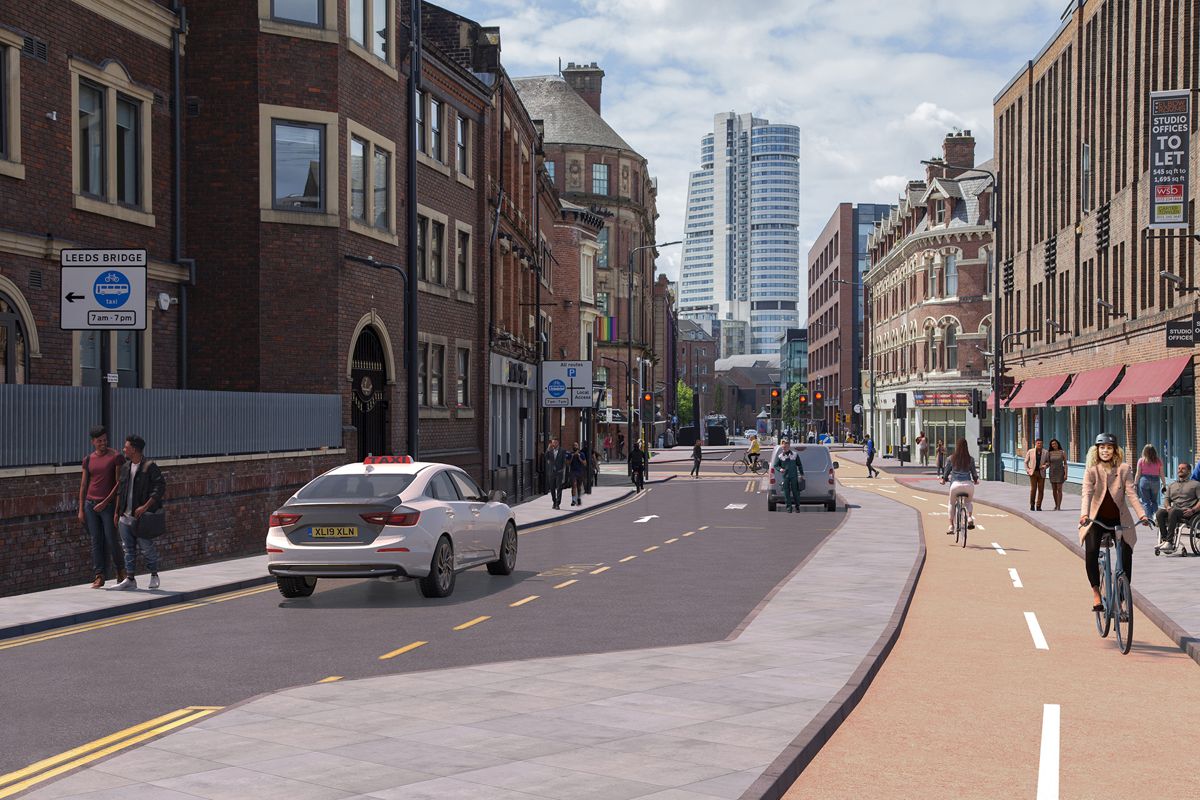Leeds city centre is seeking public input on proposed improvements to enhance accessibility, including wider pavements, clearer cycle paths, green spaces, and alfresco dining areas. These changes are part of the Connecting Leeds strategy and aim to promote walking, cycling, and reduce accidents while maintaining parking options for blue badge holders and local commerce. The deadline for feedback is 19 November, and the city is committed to building a more navigable and safer Leeds for residents and visitors alike.
What are the proposed improvements for city centre accessibility in Leeds?
Leeds aims to enhance city centre accessibility with broader pavements, clear cycle paths, green spaces, and alfresco dining areas. This initiative, part of the Connecting Leeds strategy, is designed to encourage walking, cycling, and reduce accidents while maintaining blue badge parking and local commerce loading areas. Public feedback is requested to help shape these changes.
Seeking Community Input on Urban Mobility
The council has extended an invitation for feedback on a project set to revolutionize urban travel. With a focus on pedestrians and cyclists, this initiative is part of the broader Connecting Leeds strategy, aiming to redesign city streets. The goal is to foster a more navigable and safer Leeds for residents and visitors alike. Proposed changes on streets like Great George Street and Merrion Street are not just cosmetic; they’re intended to reduce the 62 accidents recorded in the past decade. By broadening pavements and establishing clearer cycle paths, the city hopes to encourage a shift toward greener travel methods.
The consultation extends to the aesthetics and functionality of the cityscape. Prospects include the addition of green spaces and the potential for alfresco dining areas. Despite these changes, the city assures that blue badge parking will remain intact, along with loading areas essential for local commerce. “It is encouraging to see the amount of engagement we’ve had in this consultation so far,” Councillor Helen Hayden remarked. She further emphasized the importance of community feedback, particularly from groups whose voices are less often heard.
The deadline for contributions is swiftly approaching, with the Leeds City Links consultation set to close on 19 November. The council is making a concerted effort to reach a diverse audience, ensuring the city’s future infrastructure works for everyone. Individuals can share their thoughts online, request a paper survey via email at connectingleeds@leeds.gov.uk, or by calling 0113 336 8868. Complete the survey online here.
Investment in Sustainable Transportation
Leeds is on the cusp of a substantial evolution in transportation, supported by hefty investment from the West Yorkshire Combined Authority’s CRSTS programme. The city is collaborating with local authorities to enhance the travel experience. “A reliable and inclusive transport network, which prioritises walking, cycling and public transport, is key to our plans for a stronger and better-connected region,” stated Tracy Brabin, Mayor of West Yorkshire.
Leeds is not alone in this endeavor. Cities across the UK and beyond are reimagining the role of urban spaces. By realigning public areas to prioritize people over cars, these initiatives support healthier lifestyles. The proposed plans in Leeds aim to mirror these successes, creating a city that breathes easier, with cleaner air and less congestion.
Importantly, this is not solely about reducing accident numbers. It’s about engendering a culture where active travel is not just an afterthought but a preferred choice for daily commutes. With a greater emphasis on accessibility, the city is poised to become a paragon of sustainable urban living. Yet, such transformative efforts hinge on public support and input, a fact that the city’s leaders are keenly aware of.
A Holistic Approach to Urban Rejuvenation
The initiatives being proposed are not in isolation but rather part of a comprehensive strategy to revitalize the city centre. The recent closure of City Square to through traffic is a prime example, showcasing Leeds’ commitment to repurposing urban space to enhance the living experience. These changes have the potential to influence the social fabric of the city, creating public realms where commerce, community, and nature can coalesce harmoniously.
This paradigm shift is not without its challenges. The council acknowledges the inconvenience construction can cause and appreciates the patience of citizens as the city transforms. For those needing to drive, the city recommends using the Ring Road as a conduit to the city centre, with clear indications for the best junctions or links to key destinations. More information on alternative routes is readily available for those planning their journey into the city.
As Leeds looks towards the future, the city is setting an ambitious precedent. It is embracing change, striving for a balance between progress and preservation, and inviting its citizens to play an active role in shaping the outcome. The success of projects like the Leeds City Links will determine the city’s trajectory for decades to come, aiming to create an environment where everyone can move freely and safely.
- Leeds city centre aims to enhance accessibility with wider pavements, clearer cycle paths, green spaces, and alfresco dining areas.
- These improvements are part of the Connecting Leeds strategy and aim to promote walking, cycling, and reduce accidents while maintaining parking options for blue badge holders and local commerce.
- The deadline for feedback on the proposed changes is 19 November.
- The council is seeking community input to help shape these changes and ensure the city’s infrastructure works for everyone.
- The proposed improvements are part of a comprehensive strategy to revitalize the city centre and create a more navigable and safer Leeds.
